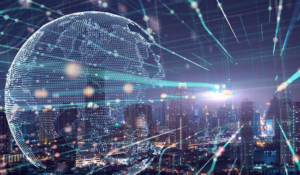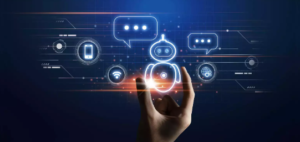
Fourth Industrial Revolution in Technology
Often referred to as Industry 4.0, the Fourth Industrial Revolution is changing our way of life, job, and interactions. Unlike other industrial revolutions that concentrated on mechanization and mass manufacturing, this one is distinguished by the mix of advanced technologies including artificial intelligence (AI), the Internet of Things (IoT), and blockchain. The great influence of these technologies, their uses and their capacity to change several sectors is investigated in this paper.
Know the Fourth Industrial Revolution.
Describes the Fourth Industrial Revolution.
From the Third Industrial Revolution, which was mostly motivated by electronics and information technology, the Fourth Industrial Revolution marks a major change. The merging of digital technologies into all spheres of human existence defines Industry 4.0.
The following main components define this new age:
Integration of digital and physical systems, cyber-physical systems help to enable smart manufacturing and automation.
IoT: Device interconnection over the internet therefore enabling data collecting and exchange.
Artificial intelligence and machine learning are systems able to make judgments with minimum human involvement by learning from data.
Blockchain is a distributed ledger system guaranteeing open and safe transactions.
Ultra-fast and dependable 5G connectivity improves data transport and communication by means of dependability.
Historical Situation
Understanding the past three revolutions can help one to truly value the Fourth Industrial Revolution:
Driven by steam engines and industrialization, the First Industrial Revolution (Late 18th to Early 19th Century) saw the change from agricultural communities to industrial powerhouses.
Mass manufacturing and the emergence of electricity and assembly lines define the Second Industrial Revolution, which took place late 19th to early 20th century.
Comprising the introduction of computers, electronics, and information technology, the Third Industrial Revolution (Late 20th Century)
Every revolution brought about basic changes in industry operations; the Fourth Industrial Revolution carries on this pattern with even more significant developments.
Key Technologies Supporting Industry 4.0
Machine Learning and artificial intelligence
Core of the Fourth Industrial Revolution are artificial intelligence (AI) and machine learning (ML). While ML is a subset of AI concentrated on learning from data, AI refers to systems meant to replicate human intellect.
From personalized recommendations in e-commerce to predictive maintenance in manufacturing, artificial intelligence and machine learning find usage in many different fields.
Across sectors, these technologies increase efficiency, lower costs, and streamline decision-making processes.
The Internet of Things (IoT) is the connecting of regular objects over the internet thereby enabling data collecting and sharing among them.
IoT lets smart home appliances including security systems and thermostats interact and maximize energy use.
In manufacturing, IoT sensors track equipment performance, forecast breakdowns, and simplify processes.
Blockchain Technology
Blockchain is a distributed ledger transparently and securely logging events across several machines.
Blockchain technology provides safe transaction ways and supports cryptocurrencies like Bitcoin in the financial industry.
Supply chains become more transparent and traceable it improves this, so lowering fraud and inefficiencies.
5G Network Connectivity
With far higher speeds and less latency than past generations, 5G is the fifth generation of mobile network technology.
5G offers fast data transfer, which is absolutely vital for IoT devices and real-time applications.
Novel ideas: It helps remote surgeries and autonomous cars to progress fields.
Fourth Industrial Revolution Technologies’ Uses
Medical Professionals
Several important technologies of the Fourth Industrial Revolution are transforming healthcare:
Remote consultations and monitoring made possible by telemedicine help to increase access to healthcare treatments.
AI in Diagnostics: Early diagnosis and treatment planning are assisted by AI algorithm analysis of medical pictures and data.
Track health data in real-time using wearable devices, therefore offering useful information for individualized treatment.
Manufacturing Industry 4.0 has revolutionized sophisticated technology-based manufacturing:

Smart factories use IoT and artificial intelligence to streamline manufacturing lines, automate tasks, and lower downtime.
3D printing lets objects be quickly prototyped and customized, hence enabling additive manufacturing.
IoT sensors combined with artificial intelligence help to forecast equipment breakdowns, hence reducing unplanned downtime.
logistics and transportation
The logistics and transportation sectors are seeing notable changes:
Autonomous Vehicles: Promising safer and more effective transportation, self-driving cars and trucks are already reality.
Blockchain and IoT improve supply chain optimization by means of openness and coordination.
IoT and data analytics help smart cities to grow, hence enhancing traffic control and public services.
Difficulties and Issues and Thoughtfulness
Information Privacy and Security:
Ensuring privacy and security is a main issue given the explosion of linked devices and data:
Threats to cybersecurity: More connection puts systems in risk for cyberattacks.
Rules for Data Protection: Maintaining confidence and safeguarding user data depend on following laws like GDPR.
Job Dislocation
The AI-driven and automated developments could cause employment displacement:
Skill Laps: Data analysis and technological ability are in increasingly demand.
Programs for reskillings: Getting the workforce ready for new positions depends on funding reskilling and upskill initiatives.
Ethical Aspects
We have to face the ethical consequences of automation and artificial intelligence:
Transparency in AI decision-making procedures guarantees this.
Reducing artificial intelligence algorithm biases will help to guarantee fair results.
Industry 4.0: Towards Future
Emerging Patterns
The Fourth Industrial Revolution will be shaped going forward by several developing trends:
Promises to transform data analysis and problem-solving with quantum computing.
Brings data processing closer to the source, Edge Computing improves real-time capabilities.
Virtual reality (VR) and augmented reality (AR) improve consumer experiences, design, and training.
Worldwide Influence
Globally impacting economies, civilizations, and cultures, the Fourth Industrial Revolution will change:
Economic Development: Competitiveness and economic progress are spurred by invention.
Leveraging possibilities and tackling problems depend on worldwide cooperation between countries.
Getting Ready for the Future
To fit the Fourth Industrial Revolution calls for proactive actions:
Investing in education and training initiatives would help people to acquire necessary skills.
Policy Development: Developing laws that support creativity while attending to security and ethical issues.
Encouragement of government, corporate, and educational institution cooperation helps one negotiate the changing terrain.
Finish
Driven by technologies such artificial intelligence, IoT, blockchain, and 5G, the Fourth Industrial Revolution marks a dramatic change. These developments are changing sectors, improving performance, and generating fresh prospects. Still, they also provide difficulties like ethical questions, job displacement, and data privacy. Understanding these technologies and their consequences will help us to better equip for the future and take advantage of Industry 4.0’s possibilities. The emphasis should always be on juggling innovation with responsibility to guarantee a good influence on society as we negotiate this upheaval.